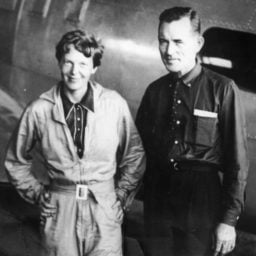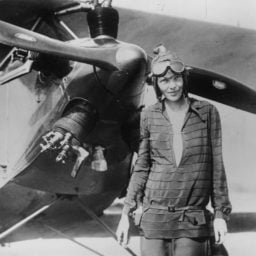The fate of Amelia Earhart is one of history’s great mysteries—but it might be solved soon.
Explorer Robert Ballard, who found the wreck of the Titanic and the Nazi battleship the Bismark, believes he can crack the case thanks to a photograph that provides a tantalizing clue as to what may have become of the great aviatrix.
“It’s not the Lock Ness Monster; it’s not Big Foot,” Ballard, 77, who is co-leading an underwater expedition with fellow explorer Allison Fundis, told National Geographic. “That plane exists, which means I’m gonna find it.”
Earhart disappeared in July 1937, while attempting to become the first woman pilot to circumnavigate the globe. The prevailing theory—and the one put forth by the US Navy—is that Earhart and her navigator, Fred Noonan, crashed into the Pacific Ocean en route to Howland Island during the third-to-last leg of their planned 29,000-mile flight.
But in 2012, Ballard was shown a photo taken by Eric Bevington, a British officer, in October 1937, three months after Earhart’s disappearance. It pictures Nikumaroro Island, one of the Pacific’s mostly uninhabited Phoenix Islands, part of the Micronesian nation of Kiribati. A tiny speck poking out of the water on the edge of the photo, known as “The Bevington Object,” is believed by some to be the landing gear of Earhart’s plane, a Lockheed model 10-E Electra.
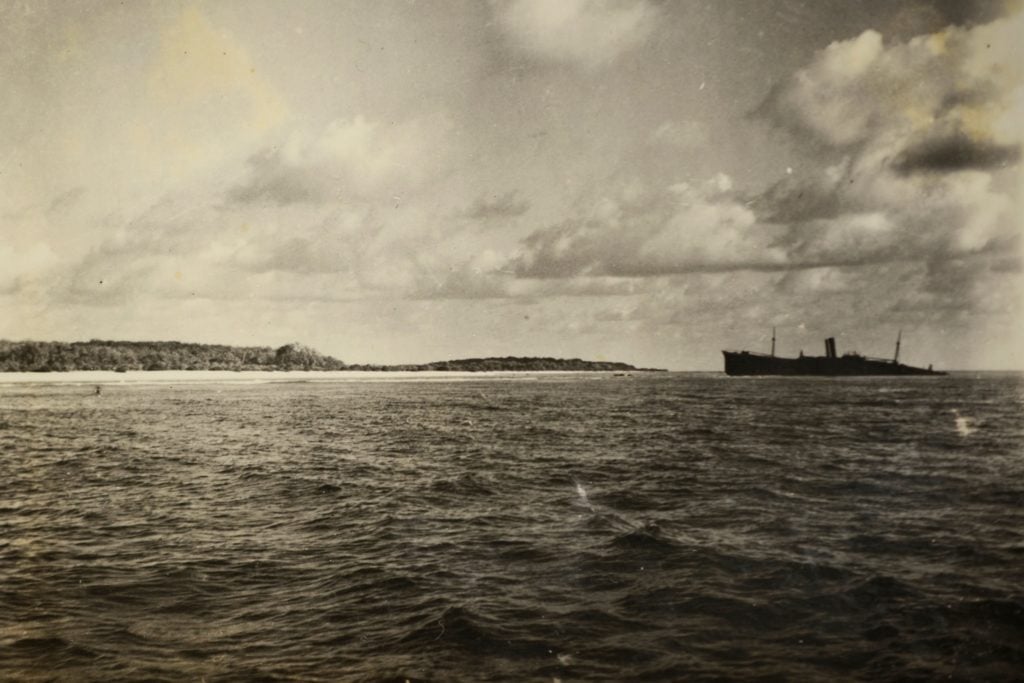
Eric Bevington took this photo of Nikumaroro Island in October 1937. “The Bevington Object” poking out from beneath the waves at the edge of the photo may be the landing gear of Earhart’s plane, a Lockheed model 10-E Electra. Photo courtesy of TIGHAR/Jeff Glickman.
The photo was first dug up by the International Group for Historic Aircraft Recovery, or TIGHAR, in 2010, as part of their Earhart Project research. In order to enhance the blurry speck on the old photograph, TIGHAR’s Jeff Glickman, a forensic imaging expert, reached out to the government for help. The image ended up at the National Geospatial-Intelligence Agency, which employed classified technology to better see what Bevington had captured with his lens. An independent review by intelligence analysts at the Pentagon agreed with TIGHAR’s conclusion that the indistinct object looked like the plane’s landing gear.
Based on the location of Earhart’s last confirmed transmission, it’s possible that she missed Howland Island and continued some 350 miles to the southeast to Nikumaroro, which would have been on her stated navigational line. It would have been an especially low tide that day, allowing her to land on a strip of sandy beach on the atoll, which measures just 4.5 miles long and one mile wide. Over the next few days, 37 radio transmissions that could have been from Earhart were received.
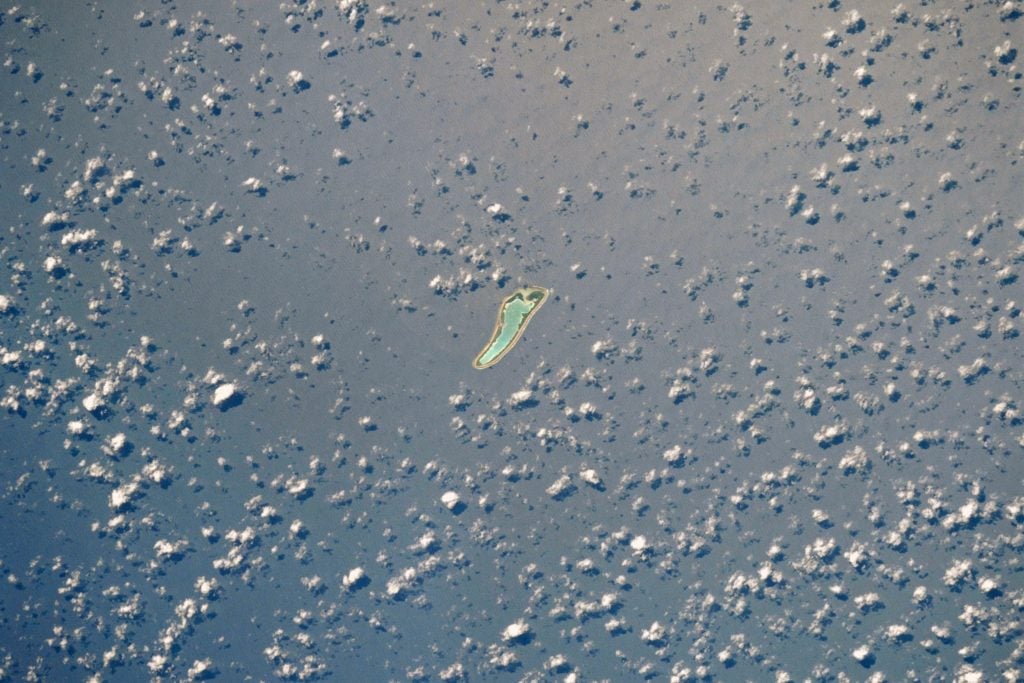
Nikumaroro Island, where Amelia Earhart may have landed her plane during her ill-fated circumnavigation of the globe. Photo courtesy of NASA.
By the time Bevington, the photographer, arrived three months later, the rising waters could have submerged the plane. Nikumaroro sits atop a 10,000-foot-tall underwater mountain, and the Electra may have gradually slid all the way down the slope. During the Navy’s search of the Phoenix Islands later that year, a pilot noted signs of recent habitation on Nikumaroro Island, but no one followed up, not realizing no one had lived there in 40 years.
A skeleton was found in Nikumaroro in 1940, but experts believed it belonged to a man due to the long length of the arms. In 2016, TIGHAR presented forensic analysis of photographs of Earhart showing that her arms were longer than average for a woman. The organization believes that the skeleton, found alongside a woman’s mirror, buttons from a flight jacket, and a jar of Earhart’s favorite anti-freckle cream, is evidence that she died as a castaway on the remote island.
There are many other theories as to what fate befell Earhart. In 2017, the History Channel documentary Amelia Earhart: The Lost Evidence offered up a photo that appears to show two Caucasians, one male, one female, in the Marshall Islands. The documentary claimed that the image, found in the National Archives, suggests that Earhart was taken captive by the Japanese government, and died a prisoner—and that the US government covered it up.
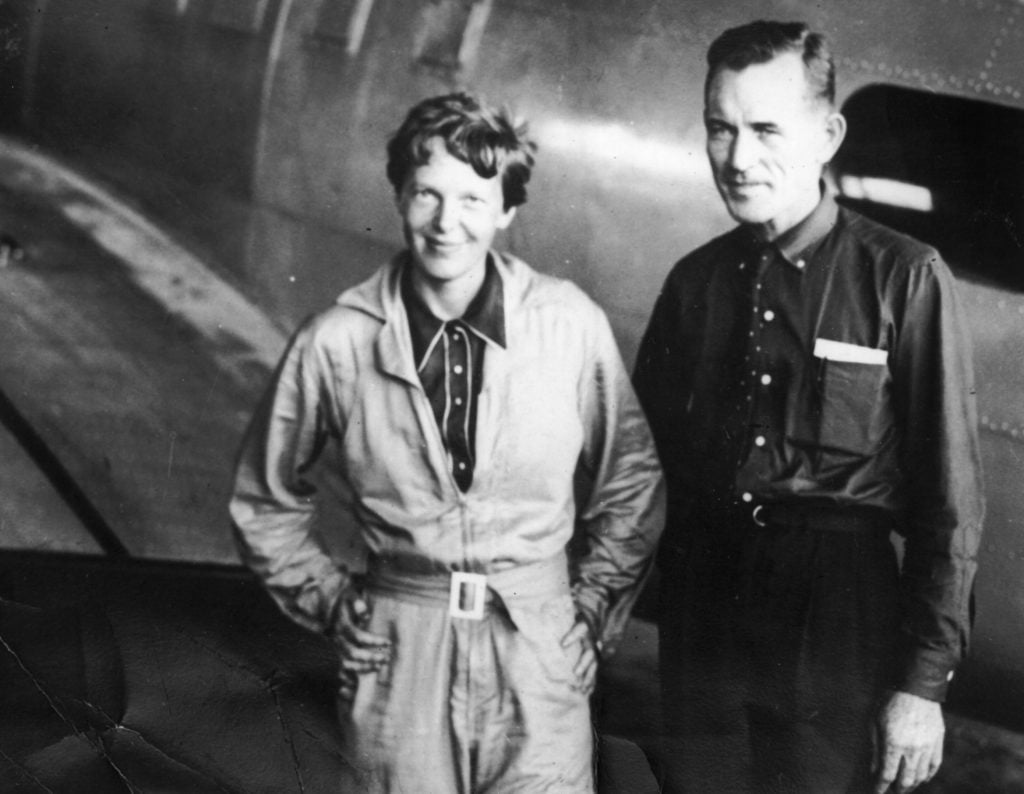
American aviatrix Amelia Earhart with her navigator, Fred Noonan, in the hangar at Parnamerim airfield, Natal, Brazil, June 11, 1937, shortly before their disappearance during their attempted circumnavigation of the globe. Courtesy of Topical Press Agency/Getty Images.
In support of its Nikumaroro theory, TIGHAR has led 13 expeditions to the island, including underwater dives. But the group has never had access to the kind of technology Ballard and his funders at the National Geographic Society have at their disposal.
Equipped with a state-of-the-art ship outfitted with drones, a multi-bear sonar, an autonomous surface vehicle (a kind of robotic boat), and two remotely operated underwater vehicles with high-def cameras that can dive nearly 20,000 feet under the surface, the E/V Nautilus is poised to finally recover the wreckage of Earhart’s plane.
The results of their findings will be broadcast in a documentary set to air on National Geographic on October 20.





